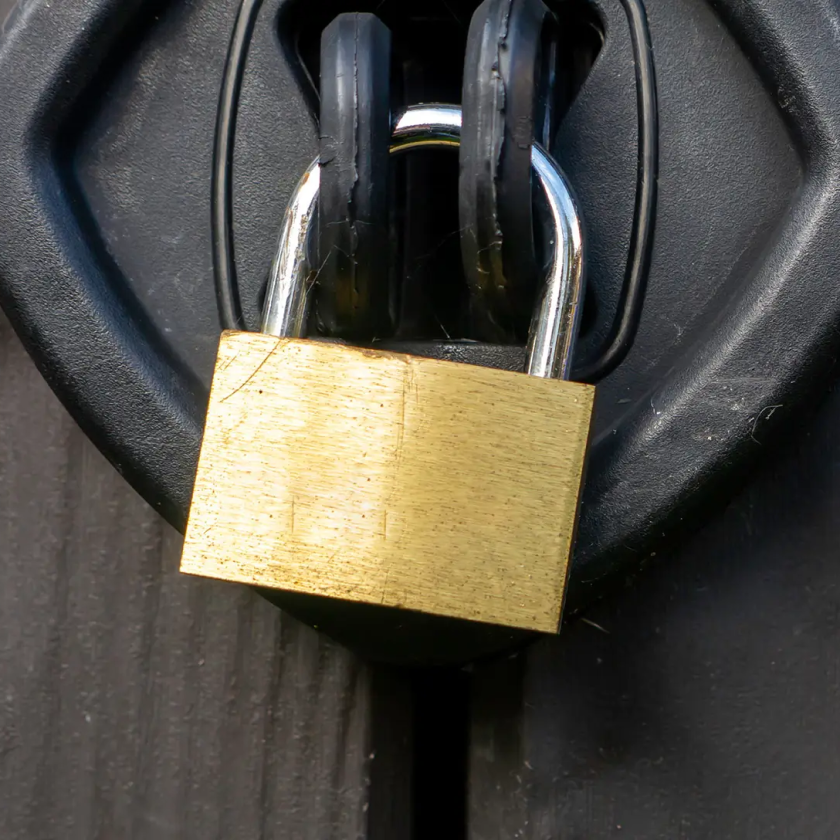In der heutigen digitalen Welt ist Passwortsicherheit wichtiger denn je. Wir verfügen privat und beruflich über unzählige Konten. Ein kompromittiertes Passwort kann da verheerende Folgen haben.
In diesem Artikel werden die Schritte erläutert, wie Sie die Sicherheit Ihrer Passwörter überprüfen und effektiv verbessern können. Sie erfahren, wie gängige Angriffe auf Passwörter aussehen und wie Sie Best Practices anwenden. Wir vermitteln Ihnen das nötige Wissen, um Ihre Onlinepräsenz zu schützen.
Durch starke, eindeutige Passwörter und Features wie die Zwei-Faktor-Authentifizierung können Sie das Risiko eines unbefugten Zugriffs erheblich verringern und Ihre personenbezogenen Daten schützen.
Wie sicher ist mein Passwort?
Wenn Sie nur ein oder zwei unterschiedliche Passwörter für all Ihre Konten verwenden, ist Ihr Passwort nicht so sicher, wie es sein sollte! Viele Menschen suchen sich Kombinationen aus Buchstaben, Zahlen und Wörtern aus, die sie sich leicht merken können, und verwenden dieses Passwort dann als „Masterschlüssel“ für all ihre Onlinekonten. Wenn Sie zu diesen Menschen gehören, sind Sie damit zumindest nicht allein.
Laut einer Studie von LastPass über Passwortsicherheit verwenden 62 % der Befragten immer oder meist dasselbe Passwort oder eine Variante davon. Dies ist eine schlechte Angewohnheit. Sie sollten für alle Konten komplett unterschiedliche Passwörter verwenden.
Arten von Passwortangriffen
Hacker haben nicht nur eine Möglichkeit, Ihre Passwörter zu stehlen. Deshalb ist es so wichtig, dass Sie verschiedene Passwörter verwenden, um sich online vor verschiedenen Angriffen auf Passwörter zu schützen:
Brute-Force-Angriff
Wie der Name „Brute Force“ (zu Deutsch: rohe Gewalt) schon vermuten lässt, erraten Hacker bei diesen Angriffen Passwörter, indem sie es einfach wieder und wieder versuchen. Wir alle kennen das: Plötzlich sitzen wir vor dem Anmeldebildschirm eines alten Kontos und fragen uns, welches Passwort wir wohl damals festgelegt haben. Also versuchen wir einfach unser Glück mit den strategisch sinnvollsten Optionen. Und jetzt übertragen Sie dieses Konzept auf Hacker, die das ganze Ratespiel über ein paar Zeilen Code automatisieren und beschleunigen können. So werden einfache Passwörter in wenigen Sekunden geknackt.
Credential Stuffing
Cyberkriminelle, die über einen Websiteangriff Listen mit Anmeldedaten gestohlen haben, starten mit diesen Daten oft Credential-Stuffing-Angriffe. Hierbei ermittelt der Angreifer die Websitekonten der Opfer anhand der E-Mail-Adressen in seiner Liste, um so herauszufinden, ob das jeweilige gestohlene Passwort auch bei anderen Konten des Nutzers funktioniert.
Und da viele Nutzer dasselbe Passwort auf verschiedenen Seiten verwenden, kann Credential Stuffing den Schaden des ursprünglichen Datendiebstahls erheblich steigern.
Phishing
Wahrscheinlich haben Sie bereits selbst Phishing erlebt, den Betrugsversuch jedoch rechtzeitig erkannt. Leider haben nicht alle Nutzer so viel Glück. Bei Phishing-Angriffen versuchen Betrüger, Sie mit gefälschter Kommunikation zu locken, z. B. mit einer E-Mail von Ihrer Bank. Sie werden beispielsweise gebeten, Ihre Kreditkartendaten einzugeben, um ein Problem zu lösen oder einen Anspruch geltend zu machen – doch die versprochene Belohnung ist buchstäblich zu schön, um wahr zu sein.
Und wenn der Angreifer einmal Ihre Daten hat, ist der Schaden groß. Wenn Sie eine E-Mail von Ihrer Bank erhalten, in der Sie aufgefordert werden, Informationen preiszugeben, gehen Sie davon aus, dass es sich um eine gefälschte E-Mail handelt, und rufen Sie Ihre Bank direkt an, um die Echtheit der Nachricht zu prüfen.
Wörterbuchangriff
Ähnlich wie bei Brute Force wird bei Wörterbuchangriffen davon ausgegangen, dass Sie normale Wörter als Passwörter verwenden. Daher werden unzählige Wörterbucheinträge abgearbeitet. Wenn Ihr Passwort also aus ein oder zwei normalen Wörtern besteht, können Ihnen diese Angriffe schnell zum Verhängnis werden.

So steigern Sie die Passwortsicherheit
Nun wissen Sie also, was Sie nicht tun sollten. Aber wie können Sie die Sicherheit Ihrer digitalen Identität und Aktivität gewährleisten? Im Folgenden finden Sie eine Zusammenstellung der wichtigsten richtigen und falschen Schritte:
Verwenden Sie sichere und individuelle Passwörter
Ein sicheres Passwort ist sowohl für Sie als Nutzer als auch für Ihr Konto eindeutig. Ihr Passwort sollte niemals an anderer Stelle verwendet werden und darf nicht mit anderen Konten oder Nutzernamen in Verbindung stehen. Ein wirklich sicheres und eindeutiges Passwort erfüllt folgende Anforderungen:
- Großbuchstaben
- Kleinbuchstaben
- Sonderzeichen (!#%$*)
- Zahlen
- Länger als 15 Zeichen
Denken Sie nach, bevor Sie ein Passwort festlegen. Sie müssen kein Cyberkrimineller sein, um zu wissen, dass ein fünfstelliges Passwort deutlich leichter zu hacken ist als ein 20-stelliges. Oder dass das Passwort „qwertz“ vielleicht ein wenig zu offensichtlich sein könnte.
Vermeiden Sie Zahlen und Symbole, die eindeutig Buchstaben ersetzen sollen, wie z. B. 0 statt O, 8 statt B, $ statt S usw. Sie sollten Ihre Passwörter außerdem alle sechs Monate ändern, um Ihre personenbezogenen Daten online besser zu schützen. Das mag zwar übervorsichtig wirken, aber beim Thema Onlinesicherheit können Sie nicht vorsichtig genug sein.
Nutzen Sie einen Passwortmanager
Ein Programm kann sich besser gegen hackende Programme verteidigen als der menschliche Verstand. Das Passwort „&*Td^zJxsQkF“ ist beispielsweise extrem sicher, könnte jedoch auch von Ihnen stammen. Doch menschliche Gewohnheiten sind oft vorhersehbar und wir alle folgen ähnlichen Pfaden auf der Tastatur, wenn wir intensiv versuchen, völlig willkürlich Tasten zu drücken.
Verwenden Sie keine öffentlichen oder ungeschützten WLANs
Öffentliche WLAN-Hotspots stellen offene Verbindungen bereit, die von jedem verwendet werden können. Und wenn nur einer der verbundenen Nutzer böswillige Absichten hat, kann er schnell andere Netzwerkteilnehmer ausnutzen. Als Faustregel gilt: Teilen Sie niemals Informationen wie Bankdaten oder Kreditkartennummern über einen öffentlichen WLAN-Hotspot.
Zwei-Faktor-Authentifizierung nutzen
Bei der Multi-Faktor-Authentifizierung benötigen Sie mehrere Sicherheitsmethoden für den Zugriff auf Ihr Konto. In der Regel wird im ersten Schritt Ihr Passwort abgefragt. Im zweiten Schritt müssen Sie dann einen Einmalcode eingeben, der Ihnen per SMS an Ihr Mobiltelefon gesendet wird.
Andere Methoden umfassen automatisierte Telefonanrufe bei der im Konto hinterlegten Mobiltelefonnummer oder Codes, die an eine andere E-Mail-Adresse gesendet werden als die, mit der das Konto erstellt wurde. Grund hierfür ist, dass Hacker – selbst wenn sie sich Zugriff auf Ihr Konto verschafft haben – wahrscheinlich nicht auf Ihr Telefon oder Ihr sekundäres E-Mail-Konto zugreifen können.
Dropbox bietet Ihnen mit der Zwei-Faktor-Authentifizierung die Möglichkeit, Ihr Konto vor unbekannten Anmeldeversuchen zu schützen. Wenn dieses Feature für Ihr Konto aktiviert ist, ist zusätzlich zu Ihrem Passwort ein 6-stelliger Sicherheitscode erforderlich, wenn Sie sich bei Ihrem Dropbox-Konto anmelden oder ein neues Gerät verknüpfen.
Nutzen Sie vertrauenswürdige und sichere Websites und Filehosting-Services
Sichere Websites verfügen über ein kleines Schloss-Symbol in der Adressleiste. Achten Sie unbedingt bei jeder Webseite auf dieses Symbol, bevor Sie online shoppen oder personenbezogene Daten eingeben.
Der Großteil aller Websites verfügt über dieses Feature. Wenn Sie jedoch Dateien und Ordner hosten möchten, sollten Sie in Sachen Sicherheit noch einen Schritt weitergehen. Dropbox setzt beispielsweise Verschlüsselung ein und erfüllt strenge Compliance-Anforderungen, um Cloud-Sicherheit auf mehreren Ebenen zu gewährleisten.
Ihre Daten – mit Dropbox zuverlässig geschützt
Die Sicherheit Ihrer Passwörter ist unglaublich wichtig. Deshalb sollten Sie sich die oben aufgeführten Schritte langfristig zur Gewohnheit machen. Wir sind keine Maschinen, die sich unzählige komplexe Zeichenfolgen merken können – zum Glück bieten Plattformen wie Dropbox zusätzliche Sicherheitsebenen, um Ihre Dateien zu schützen.
Ob für Unternehmen, Freiberufler oder Einzelnutzer, die einfach Dokumente mit Freunden teilen möchten: Dropbox stellt Ihre Sicherheit an erste Stelle. Mit Features wie Zwei-Faktor-Authentifizierung, Dateiverschlüsselung und mehr stellen wir sicher, dass Sie keine Sicherheitsverstöße befürchten müssen.
Verwandte Ressourcen ansehen

Was ist ein VPN und wie funktioniert es? Alles Wissenswerte
Die Bedeutung der Onlinesicherheit wird von Tag zu Tag größer – für Sie, Ihre Familie und Ihr Unternehmen. Hier erfahren Sie, was ein VPN ist und wie es für den Schutz Ihrer Onlineaktivitäten sorgt, damit Sie weiterhin sicher im Internet unterwegs sind.

